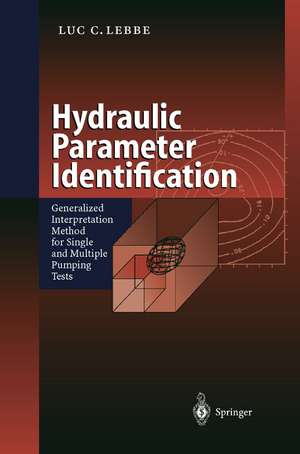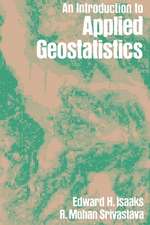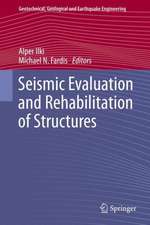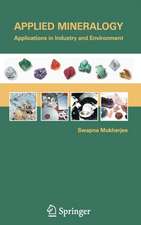Hydraulic Parameter Identification: Generalized Interpretation Method for Single and Multiple Pumping Tests
Autor Luc C. Lebbeen Limba Engleză Paperback – 4 oct 2011
Preț: 644.63 lei
Preț vechi: 758.38 lei
-15% Nou
Puncte Express: 967
Preț estimativ în valută:
123.35€ • 129.13$ • 102.06£
123.35€ • 129.13$ • 102.06£
Carte tipărită la comandă
Livrare economică 07-21 aprilie
Preluare comenzi: 021 569.72.76
Specificații
ISBN-13: 9783642642647
ISBN-10: 3642642640
Pagini: 380
Ilustrații: XVI, 359 p.
Dimensiuni: 155 x 235 x 20 mm
Greutate: 0.54 kg
Ediția:Softcover reprint of the original 1st ed. 1999
Editura: Springer Berlin, Heidelberg
Colecția Springer
Locul publicării:Berlin, Heidelberg, Germany
ISBN-10: 3642642640
Pagini: 380
Ilustrații: XVI, 359 p.
Dimensiuni: 155 x 235 x 20 mm
Greutate: 0.54 kg
Ediția:Softcover reprint of the original 1st ed. 1999
Editura: Springer Berlin, Heidelberg
Colecția Springer
Locul publicării:Berlin, Heidelberg, Germany
Public țintă
Professional/practitionerCuprins
1 / Introduction.- 1.1 Previous literature on pumping test interpretation.- 1.2 Proposed generalized interpretation method.- 1.3 Additional aims of the book.- 1.4 Arrangement of subject matter.- 2 / Hydraulic Parameters.- 2.1 Hydraulic parameters describing water conducting properties.- 2.2 Hydraulic parameters describing water storing properties.- 3 / Evolution of analytical models of pumping tests and their interpretation methods.- 3.1 Model of Thiem.- 3.2 Model of Theis.- 3.3 Model of Jacob-Hantush.- 3.4 Model of Hantush.- 3.5 Model of Hantush-Weeks.- 3.6 Model of Boulton-Cooley.- 3.7 Model of Neuman and Witherspoon.- 3.8 Retrospective view on analytical models and their derived interpretation methods.- 4 / Numerical model of pumping tests in a layered groundwater reservoir.- 4.1 Finite-difference grid.- 4.2 Mean drawdowns.- 4.3 Continuity equation in numerical model.- 4.4 Initial and boundary conditions.- 4.5 Solution of the numerical equations.- 4.6 Verification of numerical model.- 4.7 Program package for numerical simulation of pumping tests.- 5 / Further developments of pumping test model.- 5.1 Drawdown of pumping tests with variable discharge rate.- 5.2 Drawdown in a laterally anisotropic aquifer.- 5.3 Drawdown in pumping wells.- 5.4 Drawdown due to a multiple well field.- 5.5 Drawdown in groundwater reservoir with lateral bounds.- 5.6 Drawdown in groundwater reservoir with lateral discontinuous conductivity change.- 5.7 Land subsidence due to groundwater withdrawal.- 6 / Inverse model as tool for pumping test interpretation.- 6.1 Residual vector.- 6.2 Sensitivity matrix —.- 6.3 Numerical nonlinear regression.- 6.4 Validation of inverse numerical model.- 6.5 Factors influencing accuracy of results.- 6.6 Program package for the nonlinear regression.- 6.7Confidence interval for optimal estimated drawdown.- 6.8 Hypothetical example to demonstrate nonlinear regression and approximation of drawdown confidence intervals.- 7 / Example of performance and interpretation of pumping tests.- 7.1 Double pumping test in layered groundwater reservoir formed by Quaternary sediments.- 7.2 Double pumping test in a laterally anisotropic aquifer formed by fractured rocks of Palaeozoic and Mesozoic age.- 7.3 Triple pumping test in layered groundwater reservoir formed by Tertiary sediments.- 7.4 Single pumping test to determine the conductivity of Tertiary silty clay.
Caracteristici
The method is demonstrated by 5 pumping or recharge tests Computer programs which can be used in conjunctive with the text are accessible on the internet












